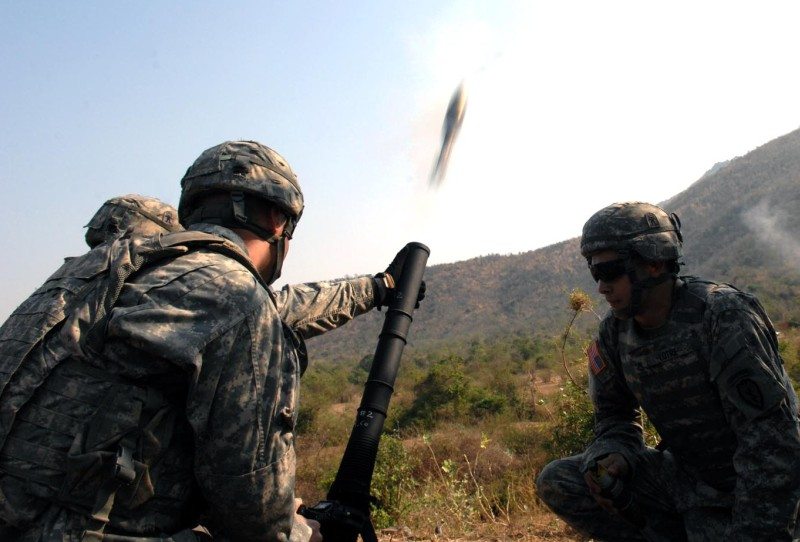Two division-level generals from the Thai Army attended a live-fire exercise Feb. 11, combining troops from the Thai Royal Army and U.S. Army Alaska’s 3rd Battalion, 509th Parachute Infantry Regiment.
The live-fire training was part of exercise Cobra Gold 2011, a regularly scheduled joint and coalition multinational exercise in Thailand designed to ensure regional peace and stability. The exercise also strengthens the Thai government’s self-defense capabilities and its ability to respond to regional contingencies.
Maj. Gen. Phi Boon Khoomchaya, deputy commander of the 1st Army Area Thailand, and Maj. Gen. Kampanart Ruthdit, commander of the Royal Thai Army’s 1st Division, observed the joint U.S.-Thai training with members of their staff and the commanders of the 3-509th and the Royal Thai Army’s 3-31st Infantry Regiment, King’s Guard at Pulon Range.
The live-fire exercise involved a wide variety of weapon types and squad movement techniques. Both Thai and U.S. elements were intermingled as they moved toward their objective.
Snipers from the 3-509th took the first shots on targets on a nearby mountainside. Immediately following the sniper engagement, a U.S. mortar team opened fire with a volley of 12 high-explosive 60 mm mortar rounds from a firing position just a few feet from the commanders’ vantage point.
“Prep fire from [high-explosive] rounds suppresses the enemy and softens them up for when the infantry moves in,” said Sgt. Lance Lacey, section sergeant for Headquarters Platoon, A Co., 3-509th. “Each shot has a 35-meter kill zone, so in the unlikely event there’s anything left when we stop firing, the flanking infantry squads will take care of it.”
As the mortar team fired rounds at the target area, teams of Thai and U.S. M-240 Bravo machine gunners and riflemen moved in on line and directed suppressive fire on the objective. That combination would have locked down any potential enemy in the target area and ensured maximum damage and cover for flanking infantry elements moving on the enemy location.
As the machine guns “talked” to one another in five- to eight-round bursts, a signal flare shot skyward from the trees to the left of the target.
“Shift fire!” a U.S. Soldier called out, as a second flare from the line of machine guns confirmed the signal had been received.
In unison, the suppressive fire gunners shifted nearly 45 degrees to the right of the objective and a massive squad of Thai and U.S. infantry forces began to bound from the tree line to assault the battered objective.
Covering each others’ teams as they dashed forward and shredding the targets with cover fire from their M-4 and TAVOR-21 rifles, the mix of lethal ground forces quickly swept the target area and cleared it of any potential threat. A mix of red and purple smoke slowly began to rise from the right-most edge of the engagement area, a signal that the troops had reached their limit of advance and the end of the training event.
The Thai dignitaries stepped forward to inspect the weapon systems, the indirect fire teams and the machine gunners. After assessing the weapons and even firing off three mortar rounds of their own, they left the training area to observe a Thai-U.S. Marine mission.
Cobra Gold 2011 is slated to end Feb. 17, and will include more training events and live-fire exercises.










